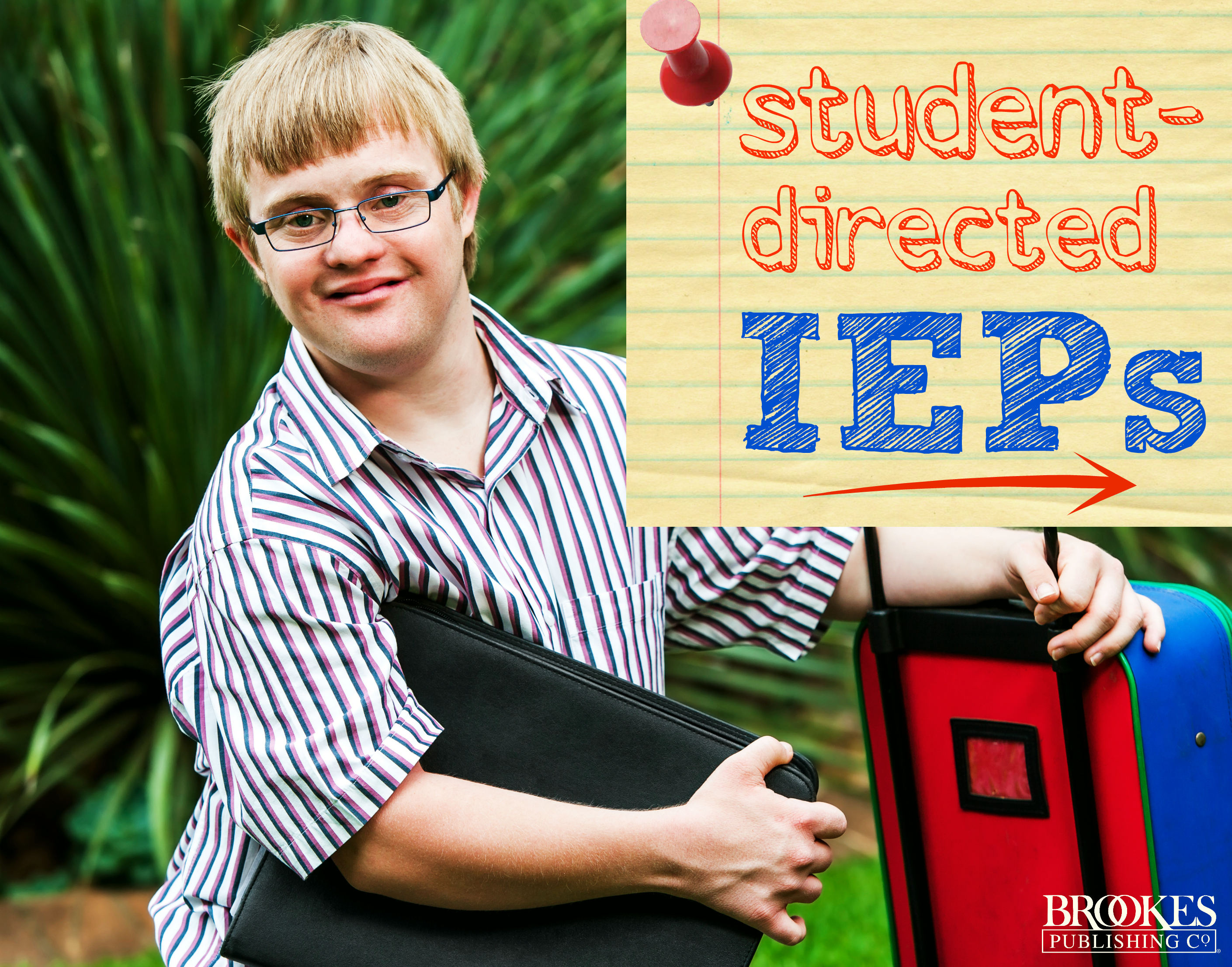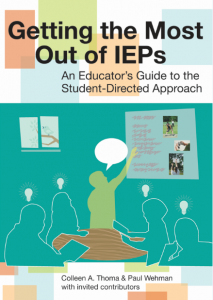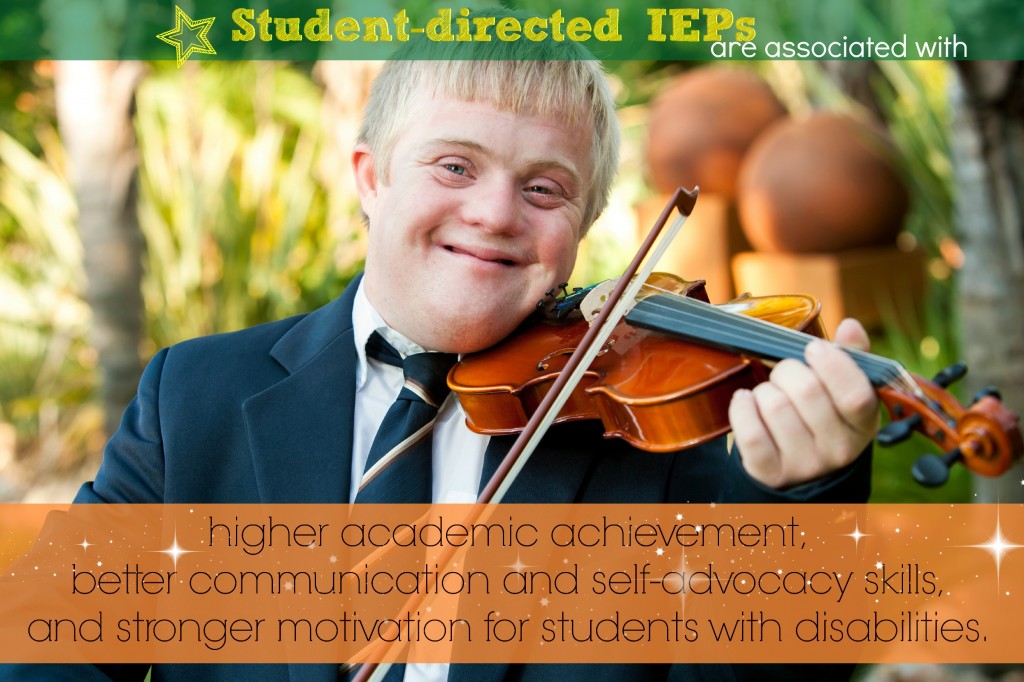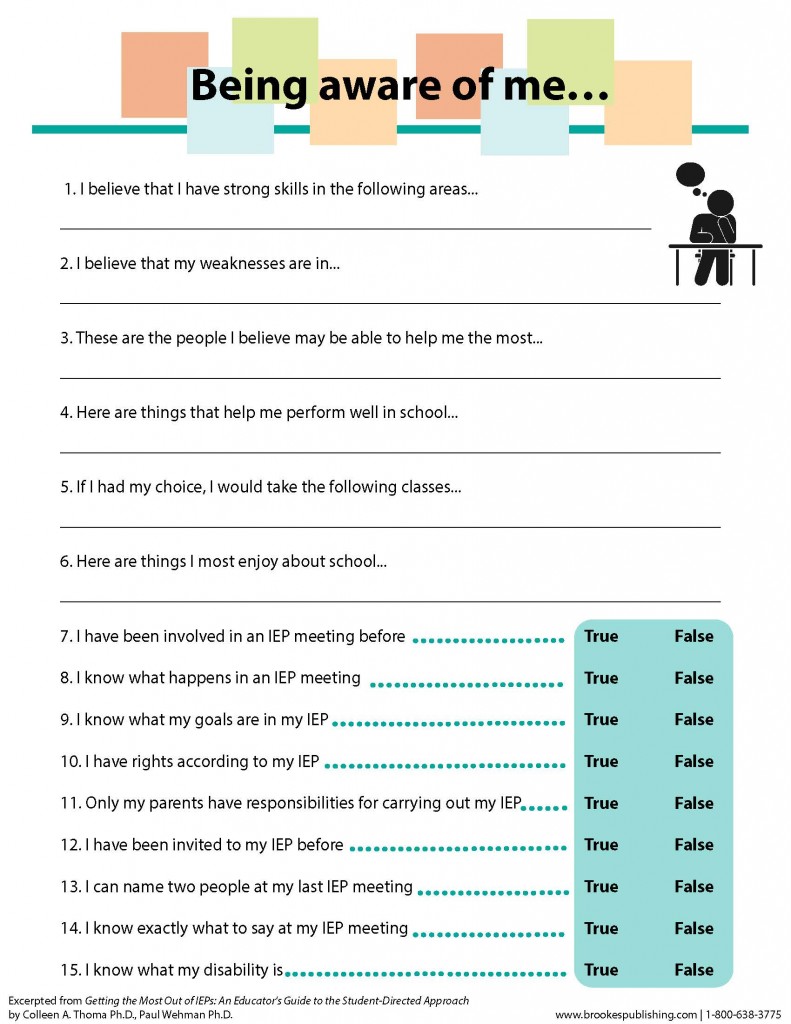9 First Steps to Student-Directed IEPs
June 9, 2015
When students take an active role in developing their own IEPs, the results can be amazing. Studies show that student-directed IEPs are associated with higher academic achievement, better communication and self-advocacy skills, and stronger motivation for students with disabilities.
Does your school embrace the concept of student-directed IEPs yet? If not, you might be wondering how to start. What are the first steps? How can you prepare a student for a bigger role in developing their educational plan?
To get you started, here are 9 practical suggestions from Colleen Thoma and Paul Wehman’s book, Getting the Most Out of IEPs. Share with your educator friends if these tips get your wheels turning:
book, Getting the Most Out of IEPs. Share with your educator friends if these tips get your wheels turning:
- Explain advocacy and self-advocacy to students not familiar with the concepts. Make sure your student understands the full spectrum of options that are available: self-advocacy, self-advocacy with support, joint advocacy, bringing in an advocate while still attending the IEP meeting, or choosing an advocate but not being present at the meeting.
- Deepen the student’s understanding of their disability. Use age-appropriate books on disability tailored to your student’s reading level. Or seek out a self-determination curriculum that includes lesson plans on helping students understand their disability and how it may affect their education.
- Informally assess student awareness of the IEP process. Talk with students one-on-one to assess how much they already know about IEPs. Be sure to supplement your conversation with input from parents and past teachers to complete your picture of how well your student understands the IEP process.
- Creatively introduce key IEP concepts. Get creative, especially if your student has significant support needs. Develop picture cards, crossword puzzles, simple games, worksheets, and activities designed to teach the most important terms and concepts related to IEP development. (We’ve included one here to get you started—see below.)
- Find a benefit that speaks directly to your student. Some kids may have a hard time envisioning the long-term benefits of being involved in their IEP process, so it’s important to find ways to illuminate more immediate benefits. Instead of explaining to your fifth-grade student how her IEP involvement will benefit her when she gets to college, focus on how it’ll help make sixth grade her best year yet.
- Discuss goals, dreams, and options. Support your students as they set the direction of their future lives beyond the classroom. Talk about their goals and dreams with them. Be a resource for new thoughts and options they might consider as they plan for their future employment, higher education, and life in the community.
- Give students a key role in meeting planning. Look for areas where your student can take the wheel. They might take on tasks like scheduling the meeting, sending invitations, preparing a presentation for the meeting, making nametags, planning refreshments, and compiling a list of questions to ask meeting participants.
- Set students up for success. The idea of public speaking can be equally daunting for students with and without disabilities. Try strategies like these to help your students prepare for success and calm any jitters:
- Role-play a practice meeting before the real thing
- Suggest they invite a trusted friend to the meeting
- Consult them on a meeting space that makes them comfortable and supports their sensory needs
- Minimize distractions by making sure the meeting is at a good time of day for your student and doesn’t conflict with a favorite activity
- Have them pre-record some of their presentation (using video, audio, or PowerPoint, for example), or support them in creating a detailed outline they can refer to during the meeting
- Foster parent involvement. Encourage your student to share what he’s learning about IEPs with parents and other key adults in his life. Enthusiasm is infectious, and parent involvement is crucial! If parents see their child is excited about participating in the IEP process, they’re more likely to attend the meetings themselves and stay involved.
Student-directed IEPs are a key stepping stone on the path to self-determination. As Colleen Thoma points out in Getting the Most Out of IEPs, “When students are more actively involved and the information shared is more personal, the IEP goals tend to be more attainable and connected to student preferences and interests.” That’s a great reason to start student-directed IEPs when your next school year begins—or expand the good work you’re already doing.
Let us know how it goes—and if you have specific IEP questions you’d like us to answer in future blog posts, add them in the comments below!
Self-Awareness Questionnaire. How much do your students already know about the IEP process? Find out with this 15-question handout.
Word Search. Increase your students’ awareness of IEP terms with this fun activity.
Read this author interview with Colleen Thoma to learn more about the benefits of student-directed IEPs (and read on to learn tips on using inclusion facilitators from fellow IEP expert Nick Martin).
Pick up Getting the Most Out of IEPs for in-depth, step-by-step advice on making student-directed IEPs work in your school.









Write a Comment
Your email address will not be published. Required fields are marked *
comments
Dani says
What I think this list really needs is even a link to general ideas of where students or their parents could find ideas about what challenges they might face in the classroom. (Since it can be hard to know what is because of a disability versus what is just hard to do, for example.) And where they could find out what had worked for other students. To me, that's what gets kids excited about being involved - something that lets them actually advocate for themselves, not just have a voice in what adults have already been doing.
jlillis says
Dani, thanks for commenting--that's a great idea! We'd love to do a followup post. What would be most helpful to you: a post with advice from self-advocates? A post with accommodations and modifications that help solve common challenges? Let me know and I'll start brainstorming some ideas. Thanks!
Andrea S. says
I wish this could have been around when I was 12 years old when it was time to plan my IEP for middle school. Then maybe I could have advocated more effectively for me to start taking a foreign language in middle school instead of being just automatically knee-jerk waived from the requirement like the other deaf kids. Then maybe by now I would have stronger fluency in a foreign language, rather than this borderline "I can read in Spanish more or less okay but still miss a lot of nuances and can't actually write anything because I never get the practice" status I'm in now (after being entirely self-taught). I'm in a field where more complete fluency in a foreign language could have been a good asset.
jlillis says
Andrea, that’s a great point about what students lose when the IEP process doesn’t welcome and support their involvement. Glad things have begun to change for today's students, and we hope student-directed IEPs are soon the rule and not the exception. Will publish some more practical blog posts about IEPs to help that along!
EGarcia says
My biggest concern with IEP's are the challenges. They are not worded correctly and sound so negative. In my opinion it hurts the student more than helps. Eventually there is an age they have to be involved. I won't go into the "evaluations" that is the reality of the students challenges. How do you help a child read this without breaking his strength or soul? On another note, please give advice on Transition to High School (vocational) and college thereafter.
Post a Comment